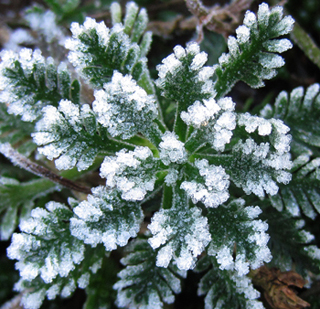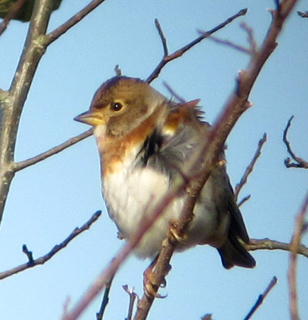 How the weather changes! Until the 15th November there were still many insects active. Red Admiral butterflies could be seen cheek by jowl with wasps on windfall apples. Bumble bees were still searching for nectar and pollen. Within a week all changed. Delicate frost glittered fruits and foliage, and a chill wind required wrapping up warmly before enjoying the changes outdoors.
How the weather changes! Until the 15th November there were still many insects active. Red Admiral butterflies could be seen cheek by jowl with wasps on windfall apples. Bumble bees were still searching for nectar and pollen. Within a week all changed. Delicate frost glittered fruits and foliage, and a chill wind required wrapping up warmly before enjoying the changes outdoors.
I was particularly struck by the eyecatching and superabundant red berries of Common Hawthorn (Crataegus monogyna) recently. This UK native plant, as its name implies, is common and indeed ubiquitous throughout most of the British Isles. It is a small, thorny tree of the family Rosaceae, growing up to 8 metres if left unchecked, but often is used to form hedgerows. Beautiful clusters of creamy-white flowers cover the trees in spring, followed by red berries (called haws) in autumn. The small lobed leaves may turn deep red in autumn before falling. Despite being so very common, Hawthorn’s value to both humans and other living things is inestimable. We have some lovely lichen-covered examples in the Roseland, the bright red berries standing out against the contrasting background of autumnal greens and golds.
 Hawthorn is a valuable resource to more than 300 insect species. Huge numbers of pollinating insects are attracted to the nectar-rich flat sprays of perfumed, creamy-white flowers in May. The caterpillars of several moth species consume the foliage, while he flowers themselves are eaten by dormice. The berries (haws) provide a food source for small mammals such as squirrels, bank voles, wood mice and yellow-necked mice, as well as for many birds such as finches, pigeons, and thrush species. In return for investing in such abundance, the Hawthorn organism is rewarded by the wide dispersal of its seed and the assurance of the continuation of its genetic line.
Hawthorn is a valuable resource to more than 300 insect species. Huge numbers of pollinating insects are attracted to the nectar-rich flat sprays of perfumed, creamy-white flowers in May. The caterpillars of several moth species consume the foliage, while he flowers themselves are eaten by dormice. The berries (haws) provide a food source for small mammals such as squirrels, bank voles, wood mice and yellow-necked mice, as well as for many birds such as finches, pigeons, and thrush species. In return for investing in such abundance, the Hawthorn organism is rewarded by the wide dispersal of its seed and the assurance of the continuation of its genetic line.
Furthermore, Hawthorn’s dense foliage provides good real estate, especially when combined with ivy along our hedgerows, providing shelter and nesting habitat for many birds and small mammals.
 Hawthorn has provided rich resources to humans too, helping us create attractive and manageable boundaries with hedging and fencing. The timber is very hard and is used in fine carpentry. Single trees make attractive, small specimen statements in gardens, and can even be topiarised to some extent. Young hawthorn leaves can be eaten raw in salads, and the berries can be used to make jellies, jams and alcoholic beverages – I’ve included a recipe for Hawthorn Schnapps below.
Hawthorn has provided rich resources to humans too, helping us create attractive and manageable boundaries with hedging and fencing. The timber is very hard and is used in fine carpentry. Single trees make attractive, small specimen statements in gardens, and can even be topiarised to some extent. Young hawthorn leaves can be eaten raw in salads, and the berries can be used to make jellies, jams and alcoholic beverages – I’ve included a recipe for Hawthorn Schnapps below.
Perhaps the most important human use of hawthorn has been as a medical resource, principally to treat heart disease, over many past centuries. Modern clinical studies have confirmed the positive effects of Hawthorn, improving coronary artery flow, and lowering blood pressure. Modern preparations of Hawthorn use the flowers and leaves, which contain the best concentrations of properties used to treat such disorders.
Hawthorn Schnapps
You will need a clean glass jar with a tight-fitting lid, and a bottle in which to store the maturing schnapps.
- Fill 2/3 of your jar with washed and dried hawthorn berries.
- Cover the berries well with a clear, unflavoured 40{c8c3b3d140ed11cb7662417ff7b2dc686ffa9c2daf0848ac14f76e68f36d0c20} vodka and close the lid firmly on the jar.
- Let the mixture steep for 5-6 weeks in a dark place at room temperature, shaking the jar every few days.
- Strain the mixture into a suitable sized bottle and store for another 8 weeks before serving.
- Enjoy!
Did you know (from the BTO)…
…that many plants colour their berry fruits red to signal ripeness, so that thrushes and other birds will eat them and disperse the seeds. Ornamental garden plant species sporting yellow, orange and pink berries, tend to retain fruits for longer, as birds assume that the sugars have not yet fully developed within the fruit.
Things to look out for this month in the Roseland
 Watch for increasing numbers of Redwings and Fieldfares attracted to all those bright hawthorn berries. They are nervous but attractive members of the Thrush family and worth viewing. Also this time last year we were visited by stunning waxwings looking for berriy food, so keep a look out for these in case they should return.
Watch for increasing numbers of Redwings and Fieldfares attracted to all those bright hawthorn berries. They are nervous but attractive members of the Thrush family and worth viewing. Also this time last year we were visited by stunning waxwings looking for berriy food, so keep a look out for these in case they should return.
Out in the stubble fields you can see huge feeding flocks of finches and other small farmland birds. Many individuals have migrated here from other parts of the UK and Europe, such as this Brambling (Fringfilla montifringilla) shown left. Starlings too are arriving in large numbers, beginning to form into the swirling murmurations fêted in popular wildlife programmes such as Springwatch.
Along with the arrival of our two Choughs in October, birders have been delighted with the return of a Pacific Diver (Gavia pacifica) out in Gerrans Bay. It is very rare to see one of these birds, which are closely related to the Black throated divers (Gavia arctica) that also visit us here in the winter. Pacific divers are normally only found in the northern Pacific, breeding in Alaska, Central and Western North Canada and Notheastern Siberia.
We were also visited by a Snow bunting (Plectrophenax nivalis) in mid-November, seen in the same area as the Choughs, near Ravens Hole. These pretty, pale-coloured buntings are on passage from arctic regions, principally Scandinavia, to North and Eastern England. Cornwall is rather southerly and westerly for a winter destination, although not a rare occurrence. The individual seen was probably a lone bird, however.
References:
Hawthorn characteristics and cultivation:
RHS Plant Selector (2013) Crataegus monogyna [Online document]. Accessed at: http://apps.rhs.org.uk/plantselector/plant?plantid=573
Medical Research:
University of Maryland Medical Center (2011) Hawthorn [Online document]. Accessed at:
http://umm.edu/health/medical/altmed/herb/hawthorn
(includes many peer-reviewed references)
Danish Schnapps Recipes:
Vivi Labo (2013) Make your own flavoured schnapps [Online document]. Accessed at: http://www.danish-schnapps-recipes.com/
All Photography by Sarah E Vandome
Enjoy more Roseland wildlife and landscapes – visit my Heart of Roseland Facebook feature:
https://www.facebook.com/HeartOfRoseland?ref=hl
